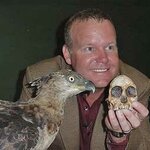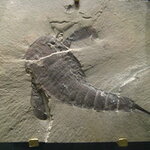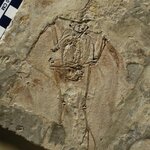Paleontology

New Missing Link - Or Maybe Not
The recent suggestion that Australopithecus Sediba is an intermediate species has aroused controversy.
The following extracts are from naturenews.
Claim over 'human ancestor' sparks furore
Researchers dispute that hominin fossil is a new species.
Michael Cherry
Witwatersrand in Johannesburg, South Africa, has revealed two remarkably well preserved hominin fossils aged just under two million years old. The fossils were discovered at Malapa cave, part of a site known as the Cradle of Humankind, some 40 kilometres west of Johannesburg. But the researchers'…

The new species of hominid discovered 40 kilometers outside of Johannesburg, South Africa, the first missing link of 2010, has been dubbed Australopithecus sediba by its discoverers.
Researchers believe the new species might be the link between the southern African ape-man Australopithecus africanus and either Homo habilis or a direct ancestor of Homo erectus. The research is detailed in this week's issue of Science.The newly discovered fossils, a juvenile male and an adult female, were deposited within a single debris flow and occur together in a near articulated state in the…

A 95-million-year-old amber deposit discovered in ethopia has added 30 arthropods from thirteen families of insects and spiders. The fossils represent some of the earliest African fossil records for a variety of arthropods, including wasps, barklice, moths, beetles, a primitive ant, a rare insect called a zorapteran, and a sheet-web weaving spider.
Parasitic fungi that lived on the resin-bearing trees were also found, as well as filaments of bacteria and the remains of flowering plants and ferns. In addition, the amber deposit may provide fresh insights into the rise and…

We've had our first missing link of 2010. What, you ask? Was the missing link not discovered twice even last year? Well, yes, if you read the mainstream media it happens quite often. And it is happening again this week so look for plenty of news reports.
But just in case you are out there and need to write one of your own, here is a handy template you can use, based on my experience.
**********
The Mainstream Media Missing Link Article Generator
University of ________ scientists say they’ve found a “missing link” that could help to rewrite the history of human…

About two dozen families of eurypterids “sea scorpions” are known from the fossil record. Although these ancient predators have a superficial similarity, including a defensive needle-like spike or telson at their tail end, they are not true scorpions. They are an extinct group of arthropods related to spiders, ticks and mites and other extant creepy crawlies.
Eurypterids hunted fish in the muddy bottoms of warm shallow seas some 460 to 248 million years ago before moving on to hunting grounds in fresh and brackish water during the later part of their reign. Their numbers diminished greatly…
A team of paleontologists said this week that some sauropod species went through drastic changes in skull shape during normal growth.
Researchers came to the conclusion after examining the The skull of a juvenile sauropod dinosaur, rediscovered in the collections of the Carnegie Museum of Natural History.
The fossil offers a rare chance to look at the early life history of Diplodocus, a 150 million-year-old sauropod from western North America.
The researchers believe these changes in skull shape may have been tied to feeding behavior, with adults and juveniles eating different foods to…
Palaeontologists have discovered a new fossil species called Cloudina carinata, a small fossil with a tubular appearance and one of the first animals that developed an external skeleton between 550 and 543 million years ago. The discovery is documented in Precambrian Research.
The fossils were found in the archaeological site El Membrillar (Badajoz), one of the few sites in Europe where the remains of Cloudina can be found. "The specimens display exceptional preservation, they appear preserved in three dimensions, and show their original form and numerous details of the shells", lead author…

Scientists have identified a hip bone found at Dinosaur Cove in Victoria, Australia that belonged to an ancestor of Tyrannosaurus rex. The discovery is the first evidence that tyrannosaur dinosaurs existed on southern continents.
The find, published in Science, sheds new light on the evolutionary history of this group of dinosaurs. It also raises the crucial question of why it was only in the north that tyrannosaurs evolved into the giant predators like T. rex.
The 30cm-long pubis bone from Dinosaur Cove looks like a rod with two expanded ends, one of which is flattened and connects to the…

Paleontologists have discovered a new bird fossil in northeast China that provides more evidence for a specialized group of small birds that diversified during the Early Cretaceous between about 130 and 120 million years ago.
The discovery also suggests that scientists have only tapped a small proportion of the birds and dinosaurs that were living at that time.
The new bird, named “Longicrusavis houi,” belongs to a group of birds known as ornithuromorphs (Ornithuromorpha), which are rare in rocks of this age. Ornithuromorphs are more closely related to modern birds than are most of the other…
Utah's red rocks have yielded a rare skeleton of a new species of plant-eating dinosaur, Seitaad ruessi, that lived 185 million years ago and may have been buried alive by a collapsing sand dune.
The discovery confirms the widespread success of sauropodomorph dinosaurs during the Early Jurassic Period, researchers say. The finding is documented this week in PLoS One
Seitaad ruessi is part of a group of dinosaurs known as sauropodomorphs. Sauropodomorphs were distributed across the globe during the Early Jurassic, when all of the continents were still together in the supercontinent named…